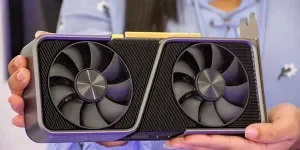Table of Contents
1. Introduction
2. Main types and usage of toasters
3. The 2024 toaster market at a glance
4. Key factors to consider when selecting toasters
5. Leading toaster models of 2025 and their features
6. Conclusion
Introduction
Selecting the right toaster in 2025 means balancing diverse needs, from efficiency and consistency to space-saving features and specialized toasting options. These appliances now come with advanced controls, multi-bread compatibility, and even smart technology, delivering more than just toasted bread. Businesses sourcing toasters benefit from models that ensure durability and cater to a range of bread types, such as bagels and pastries, with even browning and speed. A well-chosen toaster can enhance operational efficiency, streamline food preparation, and support quality consistency in any food-service environment.
Main types and usage of toasters
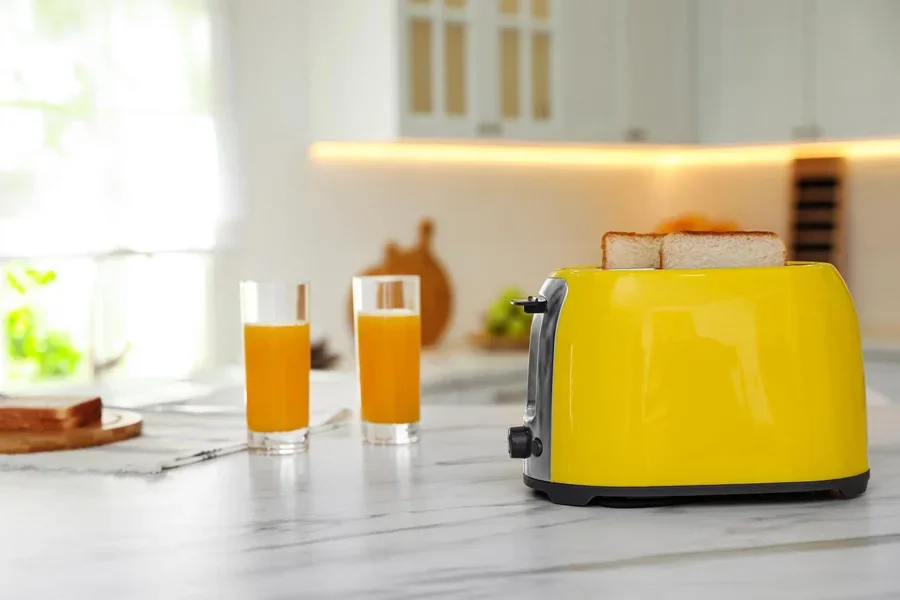
Two-slice vs. four-slice toasters
The primary distinction between two-slice and four-slice toasters comes down to capacity and speed. Two-slice toasters are compact, space-saving, and ideal for smaller households or less frequent toasting needs. They tend to fit better in environments with limited counter space, offering the basics in a smaller footprint. In contrast, four-slice toasters are built for higher demand, capable of handling double the bread load in the same amount of time, making them more efficient for busier settings. These models are especially beneficial for larger families or food-service environments where time efficiency is critical. Advanced four-slice toasters often feature independent controls, enabling customization for each pair of slots, allowing users to toast different items simultaneously without compromising quality.
Smart toasters and advanced features
Smart toasters bring convenience and precision to the toasting process with features like digital controls, countdown timers, and specialized functions. These models offer greater control over browning levels and include advanced settings such as bagel, defrost, and reheat functions, which enhance their versatility. Some premium models, like Breville’s “A Bit More” feature, allow users to add a little extra toasting time if needed, ensuring a perfect result. The rise of these technologically advanced toasters provides users with a reliable and consistent toasting experience, which is especially valuable in commercial kitchens or settings where multiple bread types and densities need to be handled with care.
Specialized toasters for bagels, waffles, and pastries
Toasters today are designed to handle more than just slices of bread, and many now come equipped with wider slots and specialized settings for bagels, waffles, and pastries. For bagel lovers, specific toaster functions ensure the perfect toast on the inner side while gently warming the exterior. Waffle and pastry settings are available in higher-end models, allowing the delicate treatment of these items without over-drying or burning. Features such as high-lift levers also allow easier retrieval of smaller items like English muffins, providing added functionality for kitchens that deal with a variety of breakfast or snack items. These specialized functions make modern toasters adaptable to a wide range of uses, catering to both home and professional kitchens that demand versatility.
The 2024 toaster market at a glance
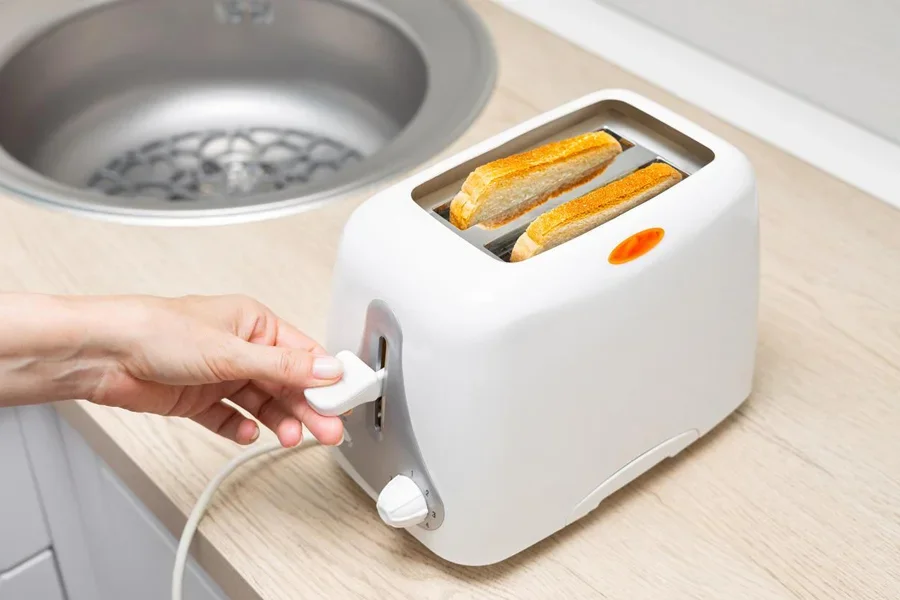
Technological advancements and industry growth
Technological advancements are reshaping the toaster market, reflecting rising consumer expectations for convenience and customization. In 2024, the global toaster market was valued at approximately USD 3.94 billion, with projections estimating it will reach around USD 5.76 billion by 2028. This anticipated growth, at a compound annual growth rate (CAGR) of 10% from 2024 to 2028, highlights the role of innovation in the industry. Smart toasters equipped with programmable settings, digital displays, and virtual assistant connectivity are becoming more prevalent, allowing users to personalize the toasting experience with ease, according to recent insights from Research and Markets.
Growing demand for energy-efficient appliances
Growing Demand for Energy-Efficient Appliances
The 2024 toaster market saw a strong trend toward energy-efficient models, with eco-friendly options growing in popularity. Features like automatic shut-off and power-saving modes cater to both environmental concerns and cost-saving goals. This demand for energy efficiency is particularly strong in regions such as North America and Europe, where eco-conscious purchasing heavily influences consumer decisions. As the market increasingly embraces sustainability, energy-efficient toasters are expected to be a major growth area, aligning with global efforts to reduce carbon footprints.
Popular brands and their market share
In 2024, leading companies held significant shares of the global toaster market, especially in regions like North America and Asia-Pacific. In North America, well-established brands achieved prominence through innovative, high-quality models, while in the Asia-Pacific region, demand for premium, energy-efficient kitchen appliances led to strong market performance for various companies. This regional success reflects the influence of local preferences, as consumers in areas like China and India increasingly favor advanced, sustainable appliances that align with eco-conscious and modern kitchen trends.
Key factors to consider when selecting toasters
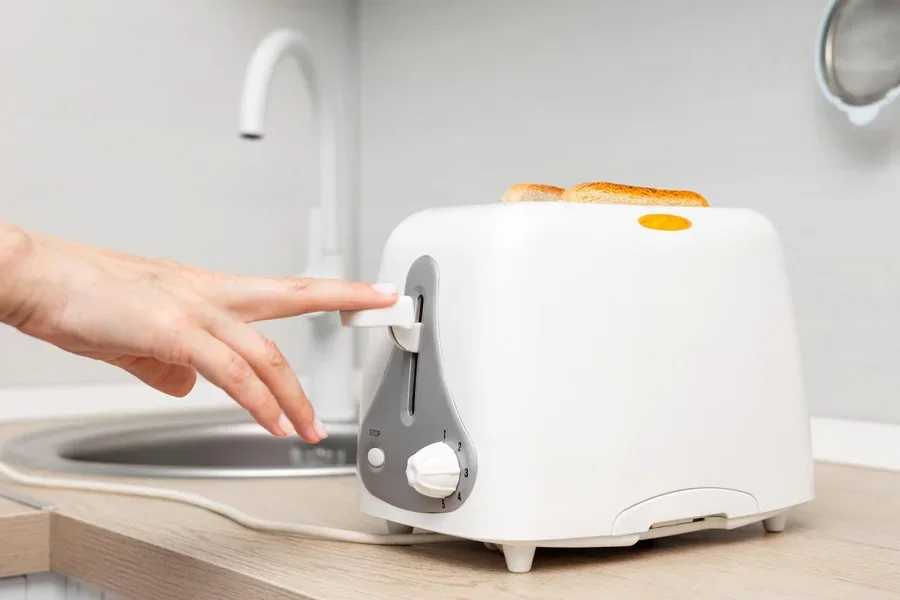
Toasting consistency and speed
Toasting consistency is critical for ensuring even browning, especially when working with diverse bread types like bagels, sourdough, and frozen waffles. High-end models, such as Breville and Dualit, are praised for their ability to provide uniform toasting across each slice, regardless of the type of bread or setting. Fast-heating elements, commonly found in four-slice toasters, reduce wait times significantly, which is valuable in high-demand settings. Toasters with multiple browning levels or precision heating controls allow for customizable results, catering to individual toasting preferences, making them highly effective in both commercial and home kitchens.
Slot size and versatility
Slot size and adaptability are important for accommodating different bread types and sizes. Adjustable slot widths, which are especially useful in four-slice toasters, allow for thicker items like artisanal bread, bagels, and specialty pastries. Long-slot toasters provide additional flexibility by accommodating wider slices or even two smaller slices in one slot. Toasters equipped with a high-lift lever, like the Cuisinart CPT-435, simplify the removal of smaller items like English muffins without risking burnt fingers. This versatility in slot design makes a toaster suitable for a wide array of breakfast options, which is advantageous in settings with varied menu offerings.
Durability and warranty
Durability is a key consideration for long-term, heavy-duty usage, as it impacts both performance and maintenance costs. Toasters constructed with high-quality stainless steel or other durable materials, such as those by Dualit, are designed to withstand frequent use and are less prone to wear. These models often come with extensive warranties, typically ranging from one to three years, ensuring peace of mind for buyers. Warranties cover key components and add value by providing support if parts need replacement, especially important for high-traffic commercial use or frequent home usage.
Space-saving designs for compact kitchens
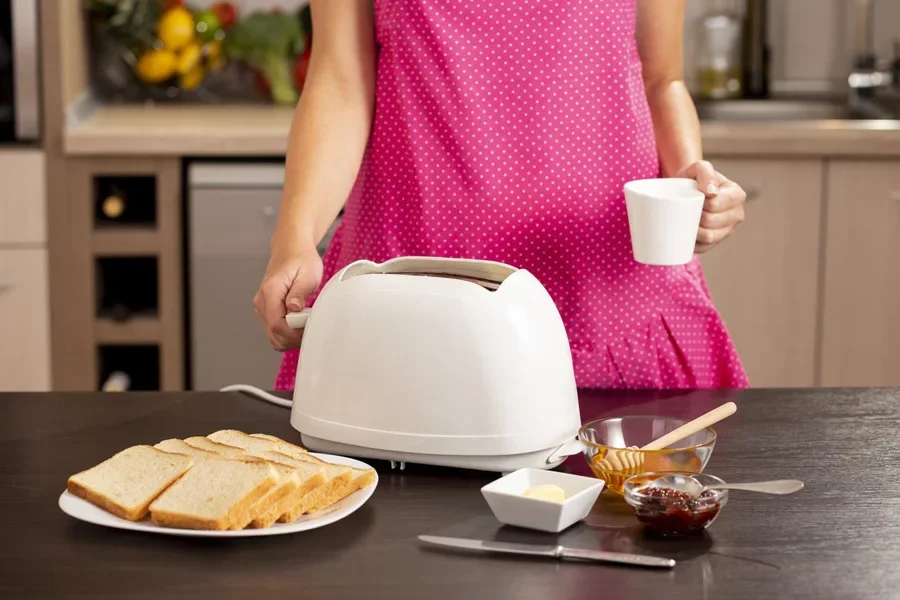
Space efficiency is essential for compact kitchens or areas with limited counter space. Two-slice models naturally occupy less space, while some four-slice models, such as the Ninja Foodi, incorporate vertical designs or smaller footprints to fit seamlessly into tighter spaces. Compact toasters with multiple functionalities, like defrost and reheat, allow users to maximize counter space without sacrificing features. Compact designs are particularly suitable for modern, minimalist kitchens and smaller commercial settings where counter space is at a premium, balancing functionality with spatial efficiency.
Price ranges and value for money
Price is a major consideration, as toaster models range significantly based on features and build quality. Entry-level two-slice models are affordable, ideal for those seeking basic functionality. High-end models with advanced features, such as Breville’s Die-Cast or smart toasters with digital interfaces, command higher prices due to their enhanced capabilities. Budget-friendly options offer reliable toasting but may lack features like multiple settings or rapid heating. Buyers should evaluate the toaster’s features, build quality, and brand reputation to ensure a balance between cost and value, ensuring it meets both performance expectations and budgetary needs.
Leading toaster models of 2025 and their features
Best for performance
Top-performing toasters in 2025 excel at delivering consistently even browning and feature various control settings for precise results. Many of these models offer an “extra time” button, enabling an additional boost if the bread requires more crispness, as well as a “check mid-cycle” feature to inspect toast progress without interrupting. High-quality materials, such as stainless steel, ensure durability, while advanced features like LED countdown timers improve control. Extra-wide slots on these toasters can accommodate artisanal and thick-cut bread, making them suitable for diverse settings where consistent, high-quality toasting is required.
Ideal choice for large households
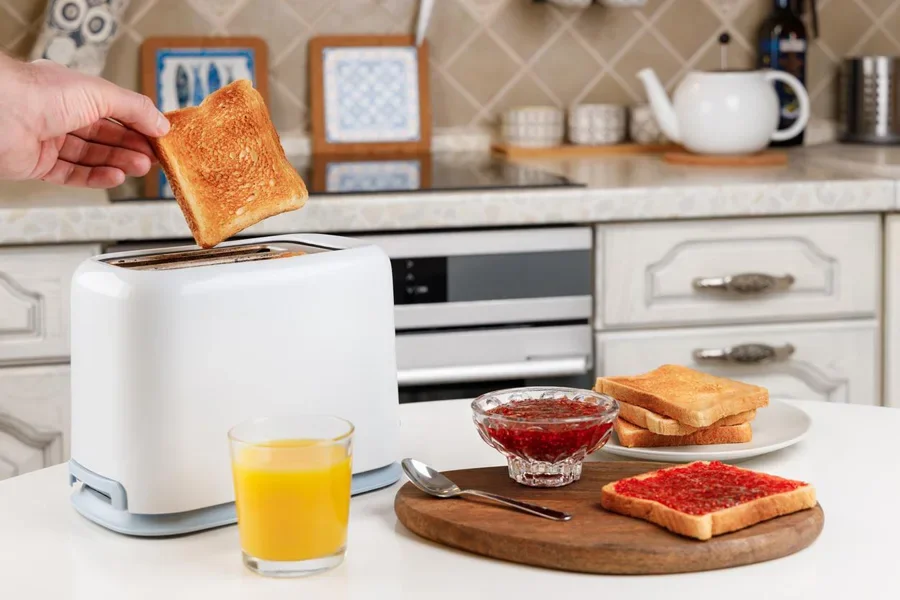
Toasters designed for high-capacity usage include features like dual-zone controls, enabling independent toasting settings for each pair of slots. This feature is ideal for households or commercial spaces where preferences vary, allowing different browning levels in a single cycle. These models often include motorized lifting mechanisms and robust construction, ensuring stability and ease of use. Wide slots and even toasting on each slice are standard, making these toasters an efficient solution for environments with frequent, high-volume toasting needs.
Best budget option
For those prioritizing affordability, many budget toasters offer reliable toasting performance with basic settings like defrost and bagel options. Despite their lower price point, these models often feature wide slots to accommodate various bread sizes and removable crumb trays for easy maintenance. They may lack more advanced features, but they provide symmetrical browning and a compact design, fitting well in smaller kitchens or as secondary appliances. Budget-friendly models are often made from durable plastic or lightweight metal, balancing affordability with essential functionality for consistent toasting.
Best for small kitchens
In compact spaces, vertically-oriented toasters with narrow profiles make efficient use of countertop real estate. These models usually come with multiple browning levels and basic defrost options, meeting various toasting preferences while minimizing space usage. Compact toasters designed for small kitchens prioritize space-saving without sacrificing core functions, and their streamlined designs fit easily under cabinets. Often constructed with easy-to-clean materials and fitted with narrow slots, these toasters cater to users who need a reliable and efficient appliance that doesn’t dominate limited kitchen space.
Conclusion
Selecting the ideal toaster involves evaluating essential factors like toasting consistency, slot versatility, and durability to ensure it meets specific needs. For businesses or households with high volume, models offering independent controls and large capacities deliver added efficiency. Compact designs serve small kitchens well, while budget options provide functionality without frills. With the toaster market evolving through technological advancements, such as smart features and energy efficiency, choosing the right appliance becomes about matching the toaster’s strengths to intended settings and performance demands, offering tailored value across a range of kitchen environments.

